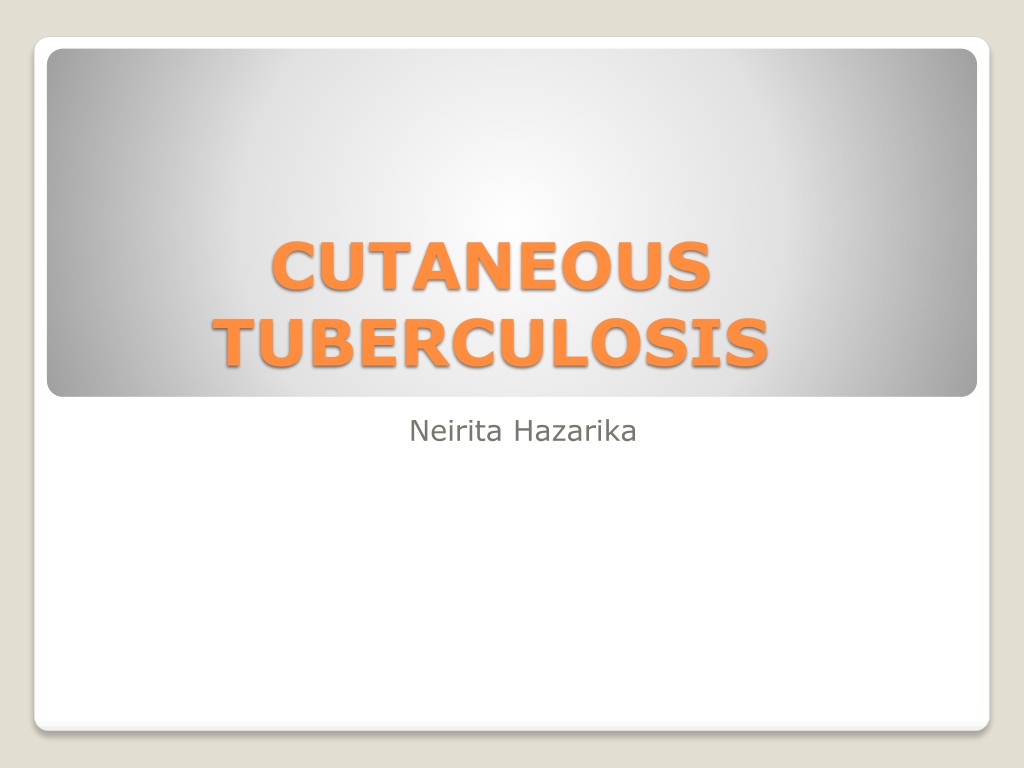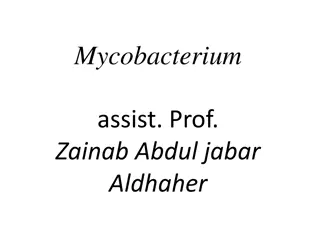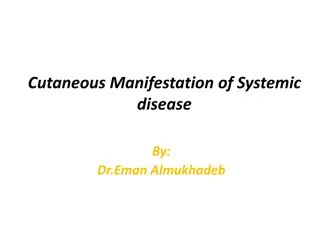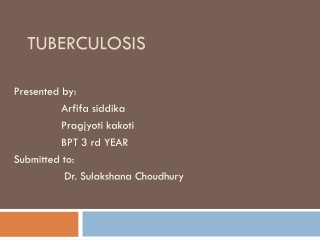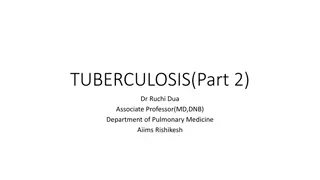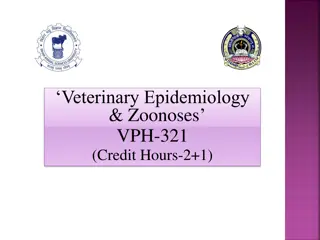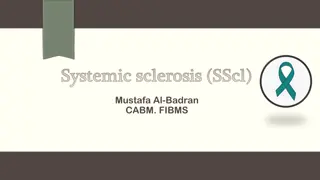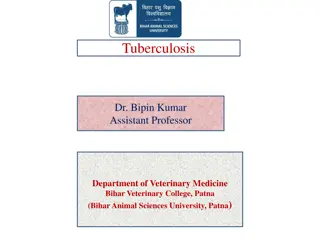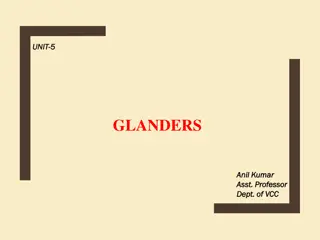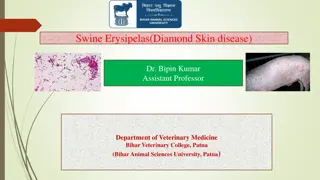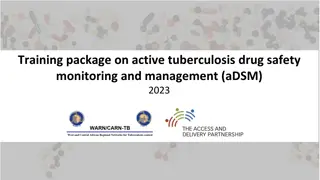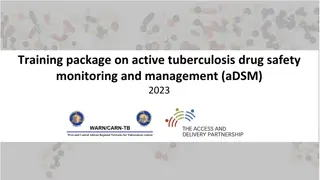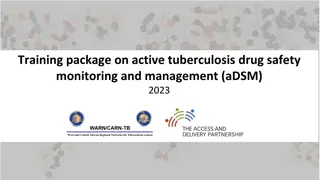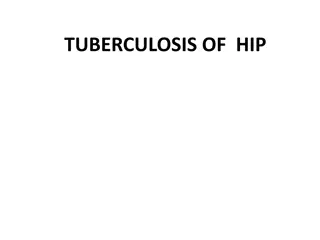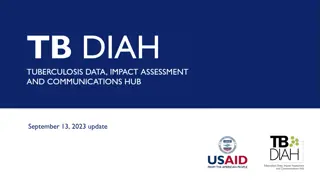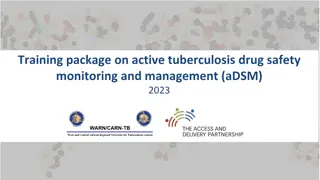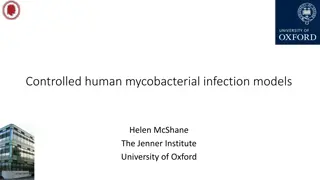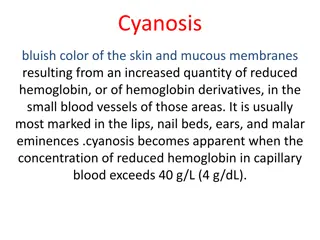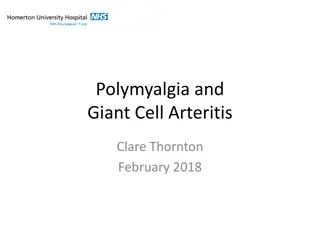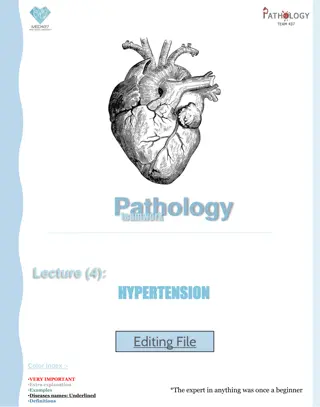Overview of Cutaneous Tuberculosis: Causes, Classification, and Clinical Features
Cutaneous tuberculosis is caused by Mycobacterium tuberculosis and its manifestations depend on the host's immunity, route of entry, and bacterial load. It is classified into exogeneous and endogenous sources, with various types such as tuberculides and tuberculous chancre. Clinical features include nodules, ulcers, and scarring. Warty tuberculosis is a form with verrucous nodules, often affecting those handling tuberculous tissue.
- Cutaneous Tuberculosis
- Mycobacterium Tuberculosis
- Classification
- Clinical Features
- Warty Tuberculosis
Download Presentation

Please find below an Image/Link to download the presentation.
The content on the website is provided AS IS for your information and personal use only. It may not be sold, licensed, or shared on other websites without obtaining consent from the author. Download presentation by click this link. If you encounter any issues during the download, it is possible that the publisher has removed the file from their server.
E N D
Presentation Transcript
CUTANEOUS TUBERCULOSIS Neirita Hazarika
PATHOGENESIS- manifestations of lesions depend on 1.Immunity of the host Specific immunity to M. Tuberculosis depending on whether exposure to the bacteria is primary or secondary General immunity of the host 2. Route of entry 3. Bacterial load
CLASSIFICATION 1.Exogeneous source Tuberculous chancre Warty tuberculosis/ TVC Lupus vulgaris 2.Endogenous source a. contiguous source Scrofuloderma b. auto-inoculation Oroficial T.B. c. hematogenous - Lupus vulgaris, Tuberculous gumma
3.Tuberculides a. Micropapular Lichen scrofulosorum b. Papular, Papulo-necrotic c. Nodular Erythema nodosum Erythema induratum(Bazin)
Tuberculous Chancre No prior immunity to M. tuberculosis ( Primary complex in the skin) Entry cuts, abrasion, insect bites, wounds Site- exposed areas of limbs, face Age - children
Clinical feature Nodule ulcerates producing tuberculous chancre Crusts form and edges become indurated Regional lymphadenopathy in few weeks Dev. Of immunity lesion heal to produce a scar
Warty Tuberculosis/ Tuberculosis Verrucosa Cutis Exogenous source Moderate to high immunity to M. tuberculosis Occupational- who handle tuberculous tissue eg. butcher, pathologist, veterinarians (anatomist wart) Site hands, feet
Single indolent verrucous nodule or plaque with a serpenginous border, indurated base, centre may show scarring. Heals in several months leaving thin atrophic scar Lymphadenopathy rare
Scrofuloderma/ Tuberculosis Cutis Colliquativa Develops as an extension of an underlying focus lymph node or bone Site cervical region common with infected cervical lymph nodes breaking down into the skin
Infected lymph nodes become inflamed, swollen, get fixed to overlying bluish skin Breakdown of lymph nodes formation of ulcers with undermined edge AFB can be demonstrated
Orificial Tuberculosis/ Tuberculosis Cutis Orificialis Develops from auto inoculation around the muco cutaneous junctions in patients with internal tuberculosis Site- lips, mouth in pulmonary T.B. anal region in intestinal T.B external genitalia in genitourinary T.B Host immunity poor with active internal disease.
Small erythematous nodules break down, form round, shallow, granulating ulcers covered by thin crust. Painful No tendency to heal without effective treatment Tuberculin test may be -ve
Lupus Vulgaris most common form of cut. TB Usually acquired from an external source; rarely from haematogenous dissemination Site around nose (nasal mucosa and lips) and face in western countries buttocks, thighs, legs in India
Initial lesion is a soft erythematous nodule Slowly several such nodules coaslesce to form a soft plaque which slowly extends Presence of APPLE JELLY nodules at edge of plaques- in diascopy( uncommon in Indian skin) MATCH STICK sign soft nodules can be probed or pierced with a match skick
Diseases relentlessly progresses with irregular extension of the plaque Healing occurs with SCARRING Occasional ulceration, crusting and scarring with destruction of underlying tissues and cartilage- ULCERATIVE and MUTILATING form
Tuberculous Gumma Results hematogenous dissemination from a tubercular focus Usual in malnourished children The lesion is initially a subcutaneous nodule which breaks into the skin to form an ulcer with an undermined edges.
TUBERCULIDES Symmetrical eruptions Result of internal focus of tuberculosis, though internal disease may not be active. Patient health is good. Prob. Cause hematogenous dissemination of bacilli in a person with high degree of immunity Tuberculin test always +ve Cured by ATT
Lichen Scrofulosorum Tiny<5mm, perifollicular, lichenoid papules Asymptomatic Site trunk Involute after many months without scars Tuberculin test strongly +ve
Papulonecrotic Tuberculides Crops of deep seated papules and nodules Lesions are capped by pustules; ulcerate forming crusts Heal in a few months with scar New crops keep developing Asymptomatic Tuberculin test strongly +ve
Erythema Nodosum Crops of indurated very tender, erythematous deep seated nodules, which evolve from red to violaceous to yellow Inspection bruise, palpation nodule Never ulcerates; heal without scarring Site bilateral shins Constitutional- fever, malaise
Tuberculin test +ve Course- spontaneous resolution in 6 weeks Histology septal pannicullitis no vasculitis
Erythema Induratum Site- calves in young adult females Bilaterally symmetrical Initial develop in cold weather Subcutaneous nodules and plaques with gradually involve the overlying skin with ulceration
Tuberculin test +ve Ulcers heal leaving atrophic scars Chronic , recurrrent Histological nodular vasculitis
Investigations To confirm tuberculosis A. Biopsy caseating granuloma B. Isolation of M.tuberculosis 1.culture of AFB from pus, skin biopsy specimen 2. PCR C. Mantoux test
To rule out concomittant tuberculosis in other organs 1. CXR 2. X-ray joint, bones 3. FNAC of enlarged lymph nodes
Differential diagnosis lupus vulgaris- leishmaniasis, sarcoidosis, systemic fungal infection, SCC tuberculosis verrucosa cutis - warts
TREATMENT Standard ATT Intensive phase isoniazid 5mg/kg For 2 months rifampicin 10mg/ kg ethambutol 15mg/ kg pyrazinamide 20mg/kg Continuous phase - isoniazid 5mg/kg For 4 months rifampicin 10mg/ kg Extension max. 8 months
